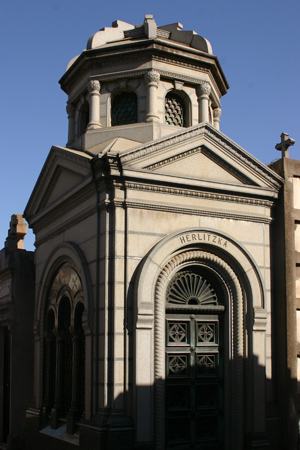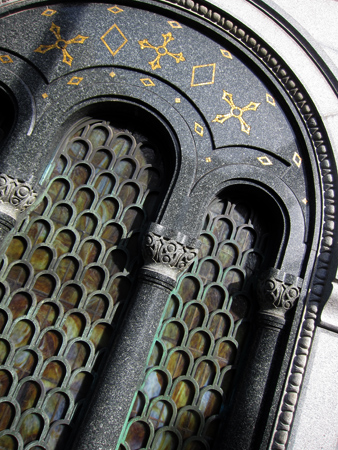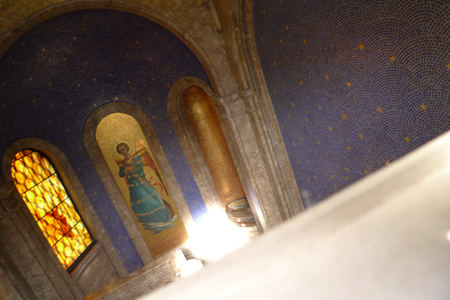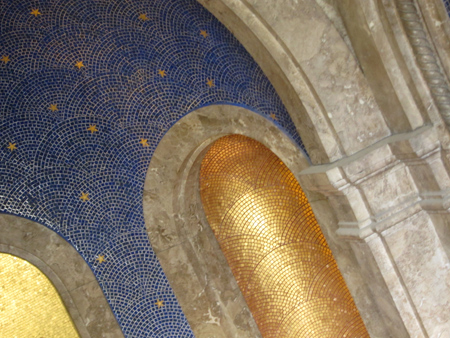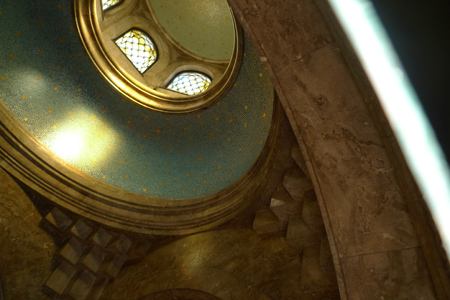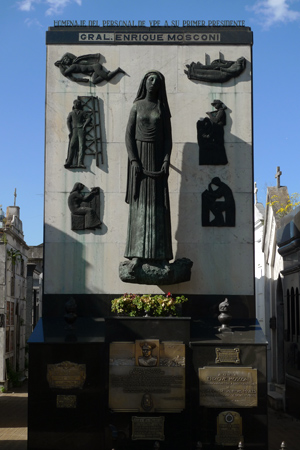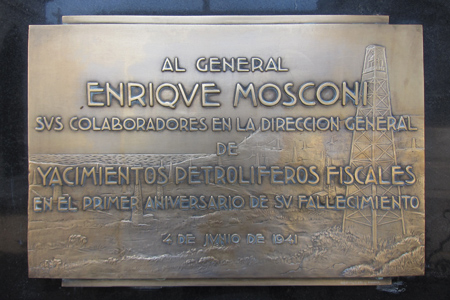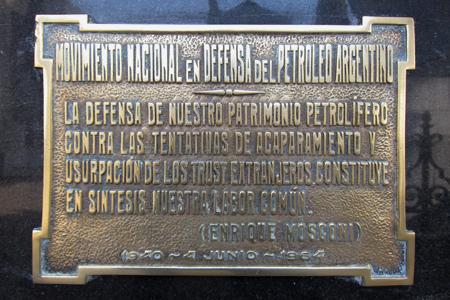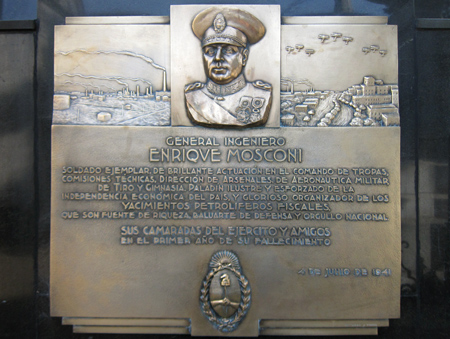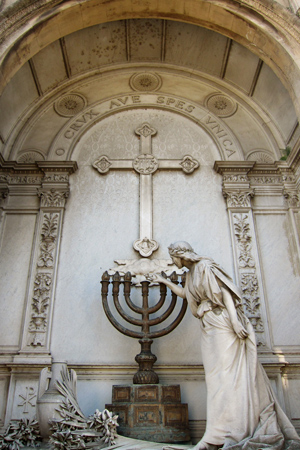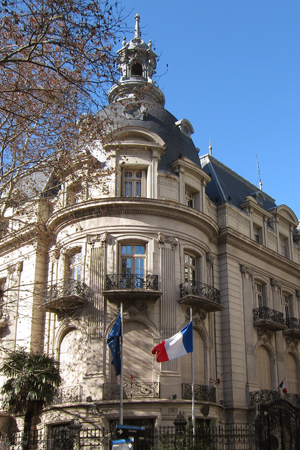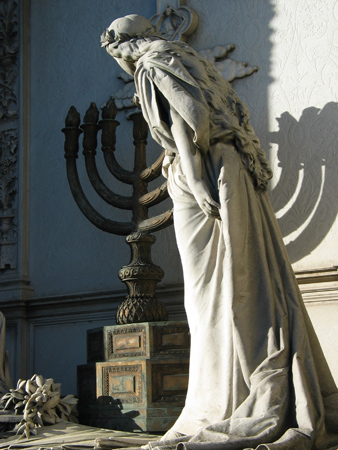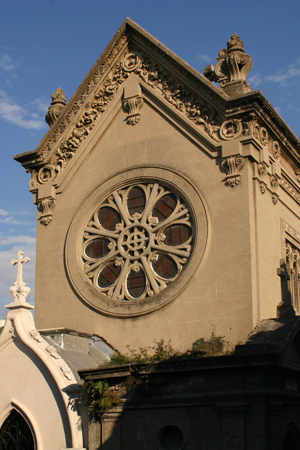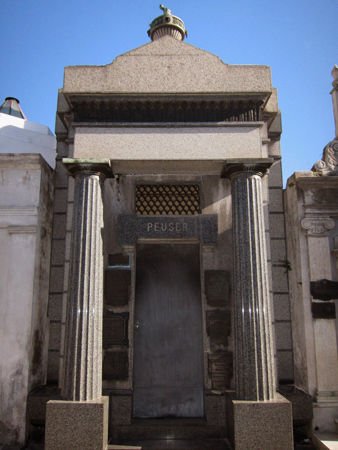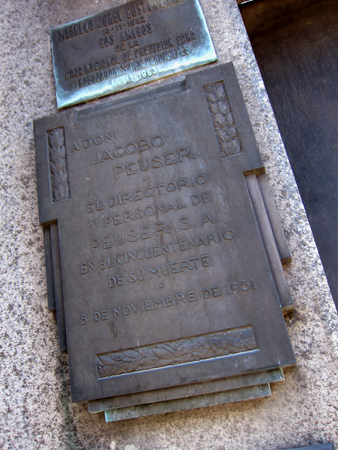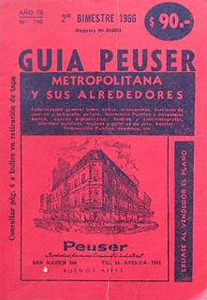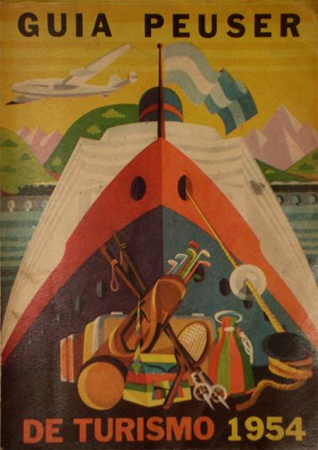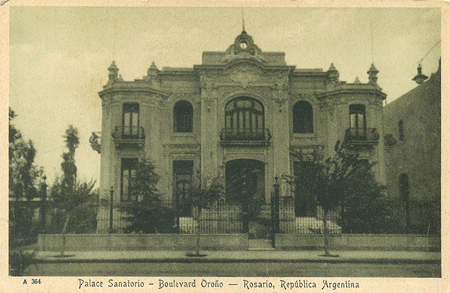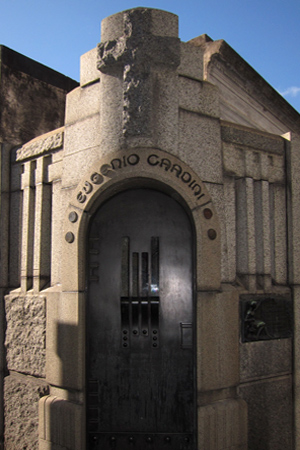
Eugenio Cardini was an immigrant from Piemonte, Italy who arrived in Buenos Aires around 1860. He eventually founded a factory which produced iron bedframes. Other types of furniture were made as well, & his market was mainly other immigrants… those with less resources, not the upper class. In 1898, some 2,000 bedframes per month were produced! The source for this info is the online Diccionario Biográfico Italo-Argentino compiled by the Asociación Dante Alighieri in Buenos Aires.
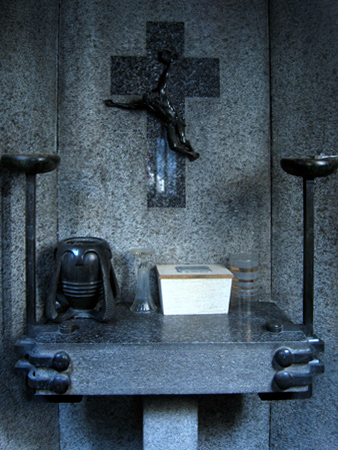
The plaque mentions the “establishment” founded by Cardini & confirms his date of death as 08 Jan 1910:
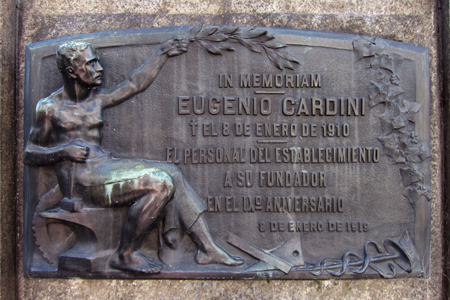
Just as interesting, Art Nouveau architect Julián García Núñez designed this vault. While not as elaborate as some of his apartment buildings, it represents one of the few constructions in Recoleta Cemetery with elements of modernisme… the Catalán take on Art Nouveau. García Núñez also built the family’s vacation home in Mar del Plata, unfortunately demolished today. Cardini faces boxer Luis Ángel Firpo & unfortunately is often overlooked.
Update (10 Dec 2012): The great-granddaughter of Cardini discovered this post & provided a bit more info (see comments below). Cardini liked photography so much that he purchased a Lumière camera during a trip to France. A brief clip of Plaza de Mayo—that’s the Cabildo in the background—from 1902 is short but very sweet. Thanks, Louise!!
Like Art Nouveau? Learn about the architects of the era, their individual styles & what makes Art Nouveau in Buenos Aires so unique with a 33-page guide from our sister site, Endless Mile.
14 Comments